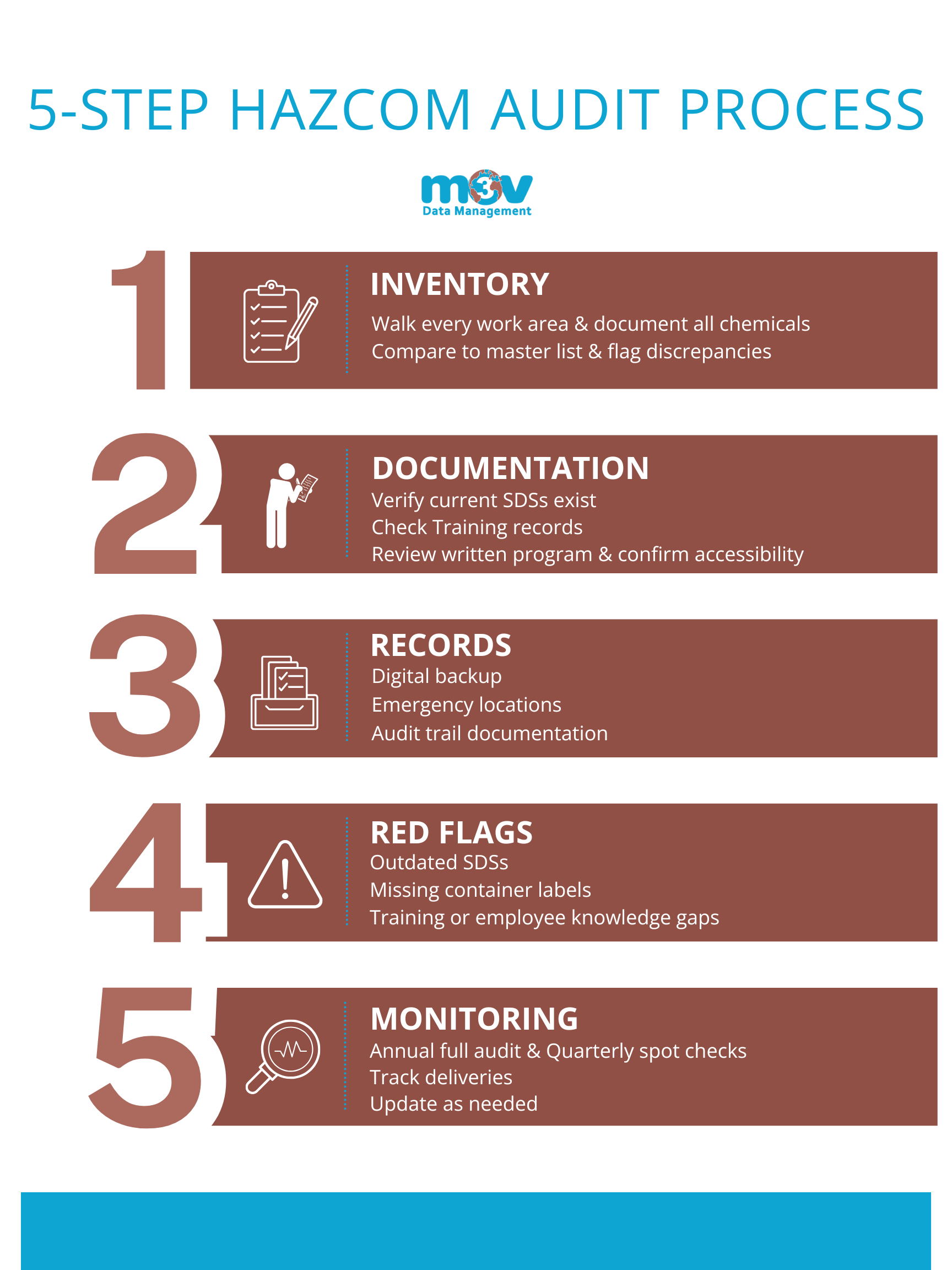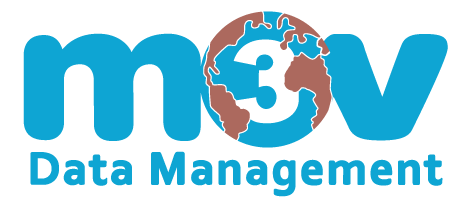An overview: A compliant hazard communication program in 2025 requires updated safety data sheets (SDSs), proper labeling of chemicals, and documented employee training. Regular reviews of chemical inventory and hazard information help maintain workplace safety and regulatory compliance.
Is your workforce truly protected from chemical hazards? In 2025, employers have faced evolving hazard classification standards and new requirements for managing hazardous materials—from combustible dust and pyrophoric gases to flammable gases and non-flammable aerosols. With each GHS revision, OSHA’s Hazard Communication Standard becomes more complex, demanding vigilance from the Health Administration and employers across the United States.
Small gaps in your hazard communication program can expose workers to serious chemical exposures and put your organization at risk for regulatory violations. This guide walks through the critical elements that demand immediate review and updating for 2025, focusing on three essential areas: modernizing SDS management with the 16-section format, updating workplace labeling practices with proper label elements, and strengthening HazCom training programs.

Conducting a Hazard Communication Program Audit
Step 1: Chemical Inventory Assessment
A thorough facility walkthrough helps you account for every hazardous chemical in your workplace while identifying potential hazards and storage issues related to toxic substances and chemical exposures.
- Walk through every room and work area in your facility
- Document all chemicals present in each location, noting chemical properties
- Note any missing items or discrepancies in hazardous material tracking
- Pay special attention to high-turnover areas and chemical storage locations
Step 2: Documentation Compliance Check
Rather than duplicating detailed requirements covered in subsequent sections, focus your audit on verifying compliance:
- Safety Data Sheets: Confirm current SDSs exist and are accessible (detailed SDS management practices covered below)
- Written Program: Verify procedures match current practices and include protocols for new hazard classification requirements
- Training Records: Check completion dates for Hazard Communication and content alignment (comprehensive training protocols detailed in later section)
Step 3: Records Management
Organized record-keeping supports quick access to hazard information and demonstrates compliance during OSHA Hazard Communication Standard inspections.
- Maintain digital safety data sheets
- Store electronic backup files in accessible emergency locations
- Keep audit records with findings and completion dates
- Document all corrective actions taken
Step 4: Critical Compliance Gaps
Watch for these common issues that surface during HazCom audits:
- SDSs missing 16-section format or outdated per GHS revision requirements
- Missing GHS compliant workplace labels on secondary chemical containers
- Employees unable to explain GHS pictogram symbols or hazard statements
- Gaps in hazardous substance inventories or chemical product tracking
- Insufficient personal protective equipment protocols for specific chemical exposures
Step 5: Ongoing Monitoring Schedule
- Complete full audits annually
- Conduct quarterly reviews of high-turnover areas
- Check areas with frequent chemical product deliveries
- Track implementation of protective measures

Safety Data Sheet Management Updates
The digital space for Safety Data Sheet management and hazard communication continues evolving, requiring organizations to adapt their practices for 2025. Modern Hazard Communication Standard implementation centers on maintaining up-to-date chemical hazards information and providing quick, reliable access to safety documentation.
Digital accessibility now stands at the forefront of workplace safety and SDS management. Organizations must maintain their hazardous chemical information in electronic formats that work across multiple devices and platforms. This includes implementing mobile-responsive systems that allow workers to access chemical safety information from tablets and smartphones while in the work area. M3V Software has emerged as a leader in this space, offering specialized solutions like SDS Explorer and Chemical Management Navigator that help organizations across education, manufacturing, healthcare, and public sectors transition from paper-based systems to intuitive, web-based platforms designed specifically for regulatory compliance.
The updating process for Safety Data Sheets follows a systematic approach that M3V’s SDS Explorer streamlines effectively. When chemical manufacturers provide new versions, employers must:
- Review changes between old and new versions, particularly updates to the 16-section format
- Update secondary container labels promptly
- Remove and archive outdated versions from circulation
- Notify affected employees about significant hazard information changes
Version control practices have become more sophisticated, particularly for organizations managing multiple departments, facilities, or campuses. M3V’s centralized approach allows EH&S professionals, safety officers, and facility managers to track hazard communication program updates, maintain detailed audit trails of changes, and archive previous versions for reference. This documentation helps demonstrate due diligence in hazardous material management and supports OSHA’s Hazard Communication Standard compliance requirements.
Multi-language considerations play an increasing role in hazard communication. With diverse workforces across the United States, employers must provide safety information in languages that all employees can understand. This often means maintaining parallel versions of SDSs while ensuring all versions remain synchronized during updates from the chemical manufacturer.
Employee access protocols now emphasize both security and convenience. Workers need immediate access to detailed information about chemical hazards, including data on combustible dust, pyrophoric gases, and other specialized hazardous substances, but systems must also protect confidential business information—a challenge that M3V’s addresses through flexible, cost-effective solutions.
Training and Communication Protocols
Understanding HazCom Training Essentials
Effective hazard communication training directly impacts workplace safety and compliance. Workers must understand chemical hazards, protective measures, and emergency procedures specific to their work area. Your HazCom training program should cover how employees can read and interpret safety data sheets, recognize hazard class pictograms, and understand label elements including hazard statements and precautionary statements found on chemical containers.
New Employee Onboarding for Chemical Safety
New employees need HazCom standard training before their initial exposure to hazardous substances. This orientation should address department-specific physical hazards, including proper handling of flammable gases, non-flammable aerosols, and other chemical products. The system of classification under the current GHS revision must be explained clearly, along with requirements for protective equipment usage.
Refresher Training and Continuous Education
Set up regular refresher training—typically annual sessions work well for most facilities. These sessions reinforce core concepts and introduce updates to chemical inventory, procedures, or regulations. Use these opportunities to gather feedback from employees about the effectiveness of current protective measures and personal protective equipment protocols.
Communication Systems for Multi-Site Operations
Review your communication methods periodically. Digital systems can help track HazCom training completion and automate reminder notifications. For organizations with multiple locations across the United States, establish clear protocols for sharing updated hazard information. Consider implementing standardized safety training materials while allowing flexibility for site-specific chemical hazards and procedures.

Workplace Labeling and Signage Review
Proper workplace labeling forms the foundation of an effective hazard communication program. From original chemical containers to facility warning signs to compliant secondary container labels, a well-organized labeling system helps workers quickly identify chemical hazards and implement appropriate protective measures.
Primary Container Labeling Requirements
Original chemical containers require specific label elements to meet OSHA’s Hazard Communication Standard:
- Product identifier matching the safety data sheet
- Complete chemical manufacturer contact information
- GHS-compliant hazard pictograms with red borders
- Appropriate signal word (Danger or Warning)
- Hazard statements describing specific risks from chemical exposures
- Precautionary statements outlining safety measures and protective equipment requirements
Secondary Container and Workplace Labels
When hazardous chemicals are moved to workplace containers, proper labeling ensures safety. Secondary container labels must include the product identifier, general physical hazard warnings matching the primary label, and align with the Safety Data Sheet (SDS). M3V’s advanced labeling system uses SDS data to create labels with unique QR codes, giving instant access to the SDS PDF with a quick scan—no searching required.
Facility Warning Signs and Chemical Storage Areas
Strategic placement of warning signs throughout your work area alerts workers to health hazards and guides them to personal protective equipment. These visual cues play a vital role in preventing chemical exposures and accidents, particularly in areas containing combustible dust, pyrophoric gases, or other specialized hazardous materials.
GHS Pictogram Standards and Recognition
The Globally Harmonized System standardizes hazard communication through consistent pictograms. Understanding these universal symbols helps workers recognize hazardous substances regardless of language barriers. Each GHS revision may introduce updates to the system of classification, requiring ongoing attention from employers and the Health Administration.

Building Your 2025 Safety Foundation
Reviewing and updating your hazard communication program requires attention to several core areas: accurate SDS inventory management, current safety data sheets in the proper 16-section format, appropriate labeling of chemicals with correct label elements, and regular HazCom training covering hazard statements and precautionary statements. Small gaps in any of these elements can impact workplace safety and regulatory compliance with OSHA Hazard Communication Standard requirements.
The work you invest now in evaluating and strengthening your program will help protect your employees from chemical exposures and keep your facility aligned with evolving regulations throughout 2025. Whether managing toxic substances, combustible dust, flammable gases, or other hazardous materials, a reliable hazard communication program serves as your foundation for occupational safety.
For organizations looking to simplify hazardous chemical compliance, M3V Data Management offers specialized software that automates SDS management, chemical tracking, and regulatory reporting. Our web-based platform helps safety teams maintain accurate hazard information, provide instant access to safety data sheets, and stay ahead of compliance requirements.
Ready to strengthen your hazard communication program for 2025? Contact M3V Data Management today to learn how our solutions can help you build and maintain a modern, compliant hazard communication system.




